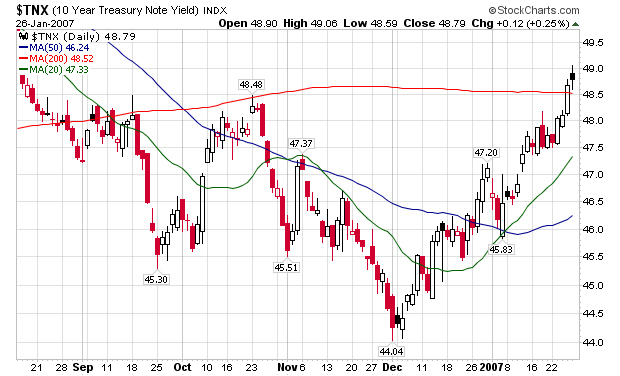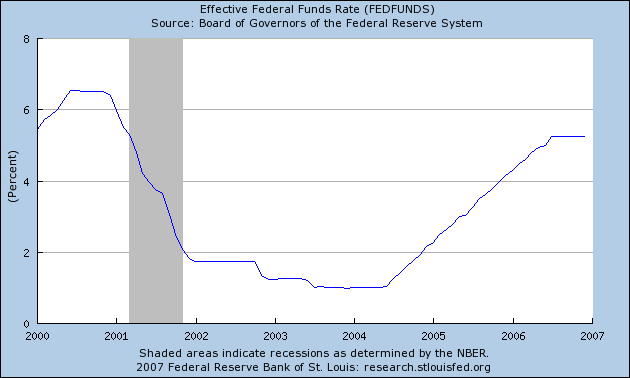Treasury 10-year note yields rose to the highest level since August this week after government bond sales drew weaker-than-expected demand and industry reports suggested the worst of the housing slump may be over.
Investors demanded higher returns on the $41 billion of securities sold as compensation for concern a strengthened economy will raise the threat of inflation. New- home sales rose more than expected and existing-home sales stabilized, the U.S. Commerce Department reported.
The government bond market has ``just been beaten down very hard,'' said Scott Gewirtz, head of Treasury trading at Lehman Brothers Inc. in New York, one of the 22 primary U.S. government securities dealers that trade with the central bank.
The yield on the benchmark 10-year note rose 10 basis points, or 0.10 percentage point, to 4.88 percent, according to bond broker Cantor Fitzgerald LP. It touched 4.90 percent yesterday, the highest since Aug. 16. The price of the 4 5/8 percent security maturing in November 2016 fell 24/32, or $7.50 per $1,000 face value, to 98 1/32.
For the last few months, talk of an interest rate cut has dominated trader's talk. I have speculated that an interest rate cut was off the table for now, largely based on numerous Federal Reserve speeches that said inflation was still too high. The Treasury market appears to share that view as the chart of the 10-year Treasury indicates:

Interest rate policy is the prime driver of the current expansion. Here is a chart from the St. Louis Fed of the effective Federal Funds rate:

The Fed lowered interest rates to 0% (after adjusting for inflation) by early 2002. Conventional economic thinking says it takes 12-18 months for interest rate changes to work their way through the economy. That would mean the last of massive cuts in 2001 fully hit the economy in early 2003 which is when overall GDP kicked into higher gear.
Now we have a Fed that is very concerned about inflation, as they have said so in a unified voice in their public speeches. Several non-official inflation measures (from the Cleveland and Dallas Fed) confirm inflation is still higher than the Federal Reserve would like. Therefore, a rate cut is still off the table, barring new economic numbers that work against that thesis.
So -- what does this mean going forward?
1.) Housing: We started to see better housing numbers in the last part of 2006. This is also when we saw interest rates drop. Therefore, don't be surprised if housing numbers fail to impress in the next few months.
2.) Borrowing costs are still historically low: 5% for capital is still cheap by historical standards. Therefore, don't expect a big dent in all of the M&A activity we have been seeing over the last half of 2006.
3.) The overall effect on consumer spending is a wild card. Pay is increasing, but consumers may want to allocate those increases to the record high debt payment level they currently have rather than spending on consumer goods. Also, the Christmas season was fair but not great, indicating consumer spending may already be slowing down.